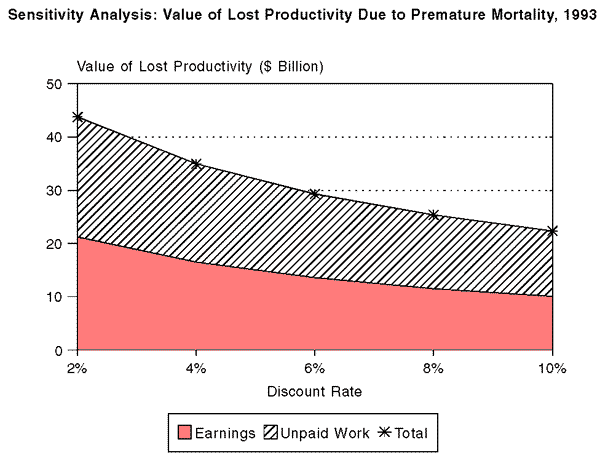Common menu bar links
Institutional links
Diseases & Conditions
Health & Safety
Research & Statistics
Agency Information
Search Box
E-mail this page
Economic Burden of Illness in Canada, 1993
APPENDIX 5
Lifetime Productivity Loss Model
Lifetime productivity loss is essentially the sum of productivity in the current year and productivity expected in future years if the individual continues to live. This concept is captured in the following equation, which is applied separately to compute the discounted value of future labour force work and unpaid work.1,2
Prod (agei, sexj) = Prod (agei+1, sexj) x Plive (agei, sexj) x (1+p) / (1+r) + Earn (agei, sexj)
Where:
Prod (agei, sexj) = discounted value of lifetime productivity for a person at age i and sex j
Plive (agei, sexj) = probability that person of sex j will be alive at age i, given they are alive age i - 1
p = productivity growth rate
r = discount rate
Earn (agei, sexj) = average annual employment income or the average value of annual unpaid work for person of age i and sex j
The average annual employment income or the average value of annual unpaid work is computed as follows.
Earn (agei, sexj) = P (agei, sexj) x E (agei, sexj)
Where:
P (agei, sexj) = percentage of Canadian population by age group and sex with earnings during 1993
E (agei, sexj) = average earnings in 1993 for those with earnings, by age group and sex

[Previous] [Next] [Table of Contents]

